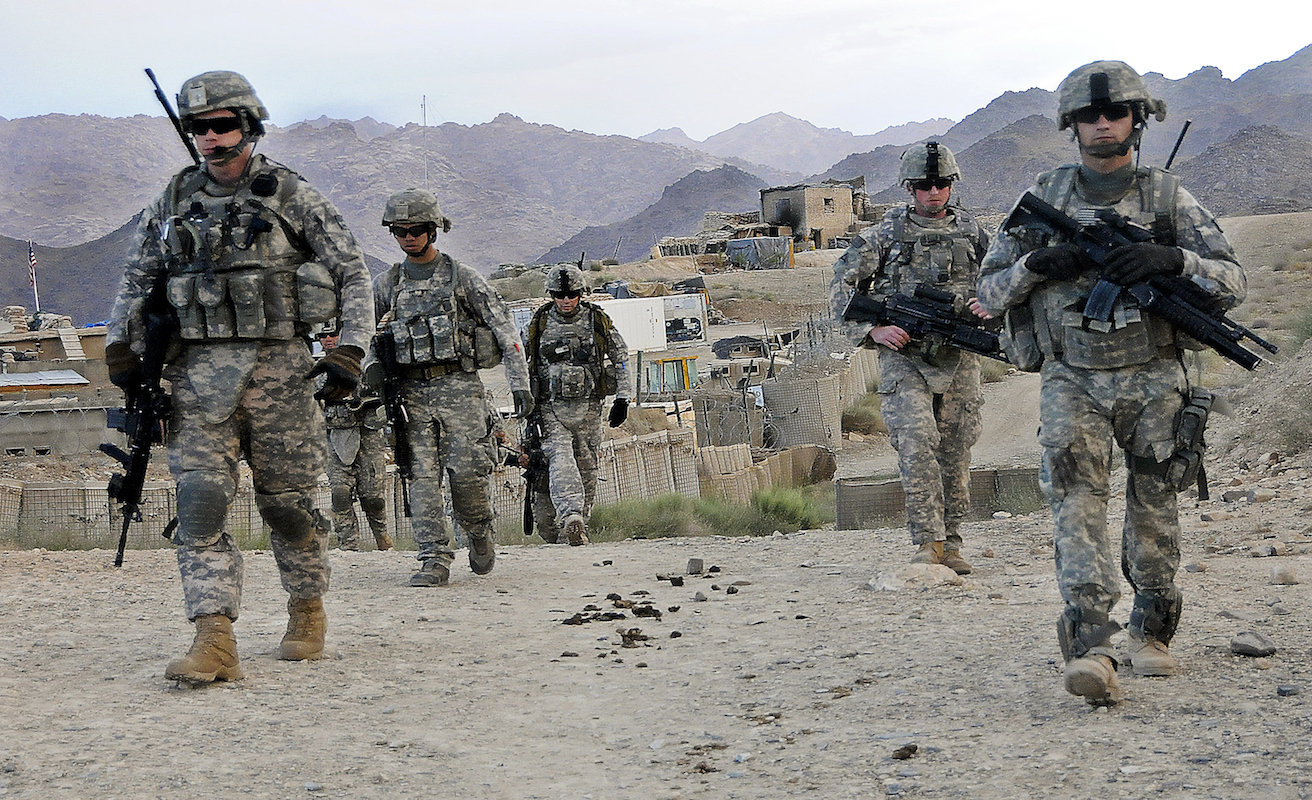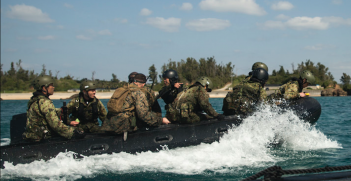Caution Rather Than Haste Needed in the Afghanistan Peace Process

The US approach to negotiations on Afghanistan has violated virtually every principle of basic negotiation technique. This has prolonged the atrocities, as the process appears to inch further away from a stable peace.
On Monday, 19 August 2019, Afghanistan marked the 100th anniversary of its independence. Celebrations were, however, muted, because on the evening of Saturday 17, the Afghan capital Kabul had witnessed one of the worst atrocities in decades of conflict. A suicide bomber from Islamic State had made his way into a wedding hall in southern Kabul where a young couple, Mirwais and Raihanna, were celebrating their marriage. At about 11:40pm, the bomber blew himself up, killing 63 guests, including 14 members of the bride’s family. Few Afghans waking to the news of this horror felt that there was much to celebrate. At the same time, some US observers appear to believe that a “peace process” that has been underway for almost a year is now on the point of delivering an agreement between the United States and the Taliban that can set the scene for an end to years of conflict that have blighted the lives of countless Afghans. In the light of these conflicting signals, it pays to pause and take stock of where we find ourselves.
An initial point to note is that the US approach to the negotiations has violated virtually every principle of basic negotiation technique. First, for years various officials in US circles have put forward the view that there is “no military solution” to the Afghan conflict. The danger of such a claim resides not just in its looseness, but in the message that it implicitly sends: it can easily be read by enemies as a sign of weakness which then shapes their approach to negotiations if and when they occur. Second, the US agreed to engage with the Taliban — meeting their longstanding demand for a precious seat at the table, with all the status that such a seat implies — without receiving a single meaningful concession in exchange. Third, it pursued its engagement in the absence of the Afghan government, which had every reason to feel it was being treated as shabbily as the Czechoslovak government at the September 1938 Munich conference. Fourth, it persisted with its discussions even as the Taliban claimed responsibility for a terrorist attack on 8 May 2019 on the Kabul office of Counterpart International, a civilian aid agency funded in part by USAID. The negotiators seemed to have forgotten the old warning that those who act as if they can be taken for granted will be taken for granted. And fifth, after long stating that “nothing is agreed until everything is agreed,” the US suddenly shifted ground, with US negotiator Zalmay Khalilzad stating that direct negotiations between the Afghan government and the Taliban, up to that point a central part of the package, would occur “after we conclude our own agreements.”
At this point, it appears that the United States may be prepared to sign two agreements with the Taliban — one governing US troop withdrawals from Afghanistan and another embodying some kind of Taliban commitment not to allow Afghan territory to be used as a base for “international terrorist groups” — but much remains imponderable: a meeting on 16 August between US President Trump and Dr Khalilzad — the first time that Trump had met face-to-face with his mediator since the negotiation commenced — did not result in the predicted sign-off for an agreement. This could reflect the influence of suggestions to Trump, notably from his ally Senator Lindsey Graham, that he tread carefully; but it may also reflect obstacles appearing in the notably-opaque decision-making of the Taliban.
A slowing down at this point would actually be no bad thing. The Afghanistan conflict is fiendishly complex, and such conflicts are rarely resolved by high-speed, fast-track negotiations. Indeed, “peace accords” in Afghanistan have a poor record of producing the results for which their architects had hoped. The 1988 Geneva Accords on Afghanistan did not bring peace to Afghanistan, but remitted the issue of internal political order to the battlefield. A concerted UN effort to put an interim regime in place in 1992 came unstuck in a dramatic fashion. And a raft of agreements in 1992 and 1993 between resistance groups all unravelled, several of them spectacularly.
A range of factors militate in favour of caution rather than haste. First, the mooted agreements overlook an angry elephant in the room, namely Pakistan’s Inter-Services Intelligence Directorate (ISI), which has long supplied sanctuary in Pakistan for the Taliban, plainly in the belief that an unstable Afghanistan is preferable to a stable Afghanistan that happens to be pro-India. There is circumstantial evidence pointing to a Pakistani hand in the US drone strike in 2016 that killed the then Taliban leader Mullah Akhtar Mansour, who had seemingly been searching for ways to escape from ISI domination; and a recent bomb blast in Quetta that killed the brother of the current Taliban leader appears equally suspicious. With Pakistan’s blood rising over new Indian steps in Kashmir, Pakistan may be inclined to condition any cooperation with the US over Afghanistan on a US position on Kashmir that Washington is extremely unlikely to take. With the Taliban best viewed as a ‘network of networks’, it is open to the ISI to enhance the role of the militant “Haqqani network,” which even the Chair of the US Joint Chiefs of Staff described as a “veritable arm” of the ISI. And in the extreme, Pakistan could seek to make use of Islamic State as a tool in Afghanistan as well. Any ‘peace accord’ which is premised on assumptions of durable, good-faith cooperation from Pakistan is based on extremely shaky foundations.
Second, the Taliban have so far conceded nothing of any significance, while the Americans have proved to be the ultimate gift that keeps on giving. The Taliban have not agreed to a ceasefire, and if they were to offer one at all, it would likely be offered in exchange for a major concession such as cancellation of the September 2019 presidential election. This is a concession to which no Afghan president with any self-respect could agree, and which would in effect sacrifice two decades of effort to develop some semblance of constitutional politics, leaving the door wide open for a Taliban demand for a totalitarian Islamic “Emirate” in which pluralist politics and individualist conceptions of human rights would have no place. The very rigidity of the Taliban on central issues of substance suggests that those who believe that the Taliban have changed their spots need to think again. A reckless deal with such a movement can be a recipe not for peace, but for civil strife and for refugee movements on a vast scale.
Third, a hasty process that creates an impression of Taliban strength, and US and Afghan government weakness, risks triggering a cascade where even forces that loathe the Taliban shift to their side because it appears that they will come out on top, and it does not pay to be aligned with losers. Mass psychology is a factor of fundamental importance in shaping Afghanistan’s likely trajectory, and deserves far more attention than Western negotiators appear to have given it. If it is neglected at this point, the negotiations story could have a very unhappy ending.
Dr William Maley is professor of diplomacy, Asia-Pacific College of Diplomacy, The Australian National University, and author of Transition in Afghanistan: Hope, Despair and the Limits of Statebuilding (2018). He visited Afghanistan most recently in August 2019
This article is published under a Creative Commons Licence and may be republished with attribution.





